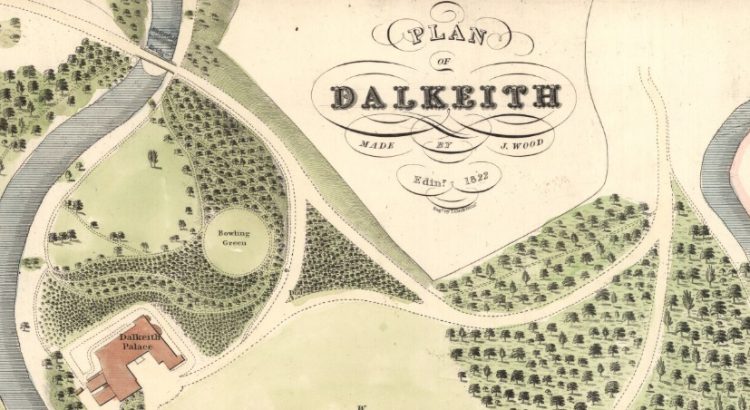Midlothian is situated south of Edinburgh, and emerged as a county in the Middle Ages, also being known as Edinburghshire until 1921. The Local Government Reorganisation in 1975 saw it lose vast swathes of land to Edinburgh, East Lothian, West Lothian and the Scottish Borders. Most of the settlements lost at this time were relatively small, the main exception being the burgh of Musselburgh which also saw the county lose its access to the sea.
The largest towns that lie within Midlothian’s current boundaries are the burgh of Dalkeith, and Penicuik, but the industrialisation of coal mining in the 19th century led to the growth of villages such as Newtongrange, Gorebridge, Bonnyrigg and Loanhead. Miners in the county were at the forefront of the 1984-85 miners’ strike, which was the beginning of the end of the coal mining industry throughout the United Kingdom.
The county gained national prominence in the 1880s when William Gladstone stood as its Liberal candidate for MP, delivering speeches in what would become known as the Midlothian Campaign, seen by many as the birth of modern political campaigning. One of his speeches took place in Dalkeith’s Corn Exchange, and over the next decades the building would host many prominent political speakers, most notably Winston Churchill.
Midlothian has long had a close link with zoology and biological sciences. In the 1890s, James Cossar Ewart of Penicuik was the first to successfully breed horses and zebras, and almost exactly 100 years later, scientists at the Roslin Institute were the first to clone a mammal (a sheep called Dolly) from an adult somatic cell.
Where to find local collections:
Midlothian Local Studies and Archive Service, Local and Family History Library, Dalkeith
https://www.midlothian.gov.uk/info/458/local_and_family_history/391/local_studies
Books – non fiction:
The Old and New Statistical Accounts of Scotland, 1791-99 and 1839-1845
https://stataccscot.edina.ac.uk/static/statacc/dist/volume/osa/
Book – fiction:
The life of Mansie Wauch tailor in Dalkeith by David Macbeth Moir. 1840-1850.
https://digital.nls.uk/104187153
Films:
Dalkeith Gala Days, 1924 and 1933 (listed as 1926, but this is an error)
https://movingimage-onsite.nls.uk/film/1562
Penicuik Children’s Gala Day, 1953
https://movingimage-onsite.nls.uk/film/1368
Manuscript collection:
Map of Roslin, 1869-1905
https://maps.nls.uk/view/216587050
Maps:
John Wood’s map of Dalkeith (coloured)
https://maps.nls.uk/view/74400064
An e-resource:
C.G. Knott – Life and Scientific Work of Peter Guthrie Tait (of Dalkeith)
https://archive.org/details/lifescientificwo00knotuoft/page/368/mode/2up
A business:
Coal Mining – a geological map showing seams in Midlothian
https://maps.nls.uk/view/190082145
A person:
John Kay (caricaturist)
https://www.nls.uk/exhibitions/scottish-enlightenment/john-kay-engravings
A song or piece of music:
Willie’s Gane To Melville Castle by Peter R. Cooke
https://www.europeana.eu/en/item/2059215/data_sounds_TDF031469
Witchcraft:
A witchcraft charm
https://www.scran.ac.uk/database/record.php?usi=000-100-002-720-C&scache=29fx4vs6mz&searchdb=scran (Library card required)
A castle or other historic building:
Roslin Castle
https://digital.nls.uk/broadsides/view/?id=16543
Food:
Confectioner – B.G. Sutherland
https://digital.nls.uk/directories/browse/archive/87361075?mode=transcription
Major events:
Gladstone’s Midlothian Campaign
https://digital.nls.uk/bartholomew/highlights/gladstone.html
Gunpowder explosion at Stobbs Mill
https://digital.nls.uk/broadsides/view/?id=15472&transcript=1
A photograph:
A series of photographs depicting Bonnyrigg Rose winning the Scottish Junior Cup in 1966 and 1978 (Library card required)
Something about the county town:
It is unclear when the town of Dalkeith first emerged on the land where the North and South Esk rivers meet, but it was mentioned in a text in the late 14th century, when a writer stayed at Dalkeith Castle. It expanded rapidly, and was granted a burgh of barony in 1401 and a burgh of regality in 1540, aided by its wide High Street, which allowed for the holding of large markets. Its proximity to Edinburgh saw a railway line linking the two built in 1831, while the extent of its markets saw Scotland’s largest Corn Exchange opened in 1853.
But living conditions in the town were insanitary, and diseases such as cholera were rife. The town’s first Labour Party-led council, in the 1920s, made the improvement of living conditions a priority, and new housing was erected. From the 1940s, this drive to build adequate housing took on even greater importance amongst the town’s elected officials, and the estate of Woodburn was gradually erected. Further improvements were made in the 1960s with the demolition of the inadequate streets and buildings, such as The Wicket, sited in a triangle between the High Street, South Street and Buccleuch Street. These were replaced by three open public areas – Jarnac, Eskdaill and Komarom Courts – which became home to a shopping centre and Council buildings.
Sixty years after the erection of these public areas, there is a consensus amongst Dalkeithians and visitors to the town that they look tired and dated, and there is a drive from local community groups, such as One Dalkeith, to engage with the Council as a means of facilitating modernisation.
Something about a village or small place:
The village of Newbattle is situated to the west of Dalkeith. The original houses were few, built around a Cistercian Abbey, the original incarnation of which has long since disappeared, replaced by a more modern building. Since the 1960s small housing estates have emerged, one being built on the short-lived Newbattle Golf Course.
The monks who lived at the original Abbey, which was built in 1144, were said to be the first to mine for coal. Incursions by English forces saw the Abbey razed in 1385, and again in 1544, leading to the current incarnation. It remained in the hands of the Kerr family until 1937, at which time it was gifted to the nation and has served ever since as an educational college.
J.C. Carrick, The Abbey of S. Mary Newbottle: A Memorial of the Royal Visit 1907
https://archive.org/details/abbeysmarynewbo01carrgoog/mode/2up
Further reading:
Alexander Mitchell, Political and Social Movements in Dalkeith from 1831 to 1882 (1882)
https://search.nls.uk/permalink/f/sbbkgr/44NLS_ALMA21535110660004341
Ian MacDougall, Mungo Mackay and the Green Table: Newtongrange Miners Remember (1995)
https://search.nls.uk/permalink/f/sbbkgr/44NLS_ALMA21448470860004341
Ian MacDougall, Hoggie’s Angels: Tattie Howkers Remember (1995)
https://search.nls.uk/permalink/f/sbbkgr/44NLS_ALMA21448598800004341
